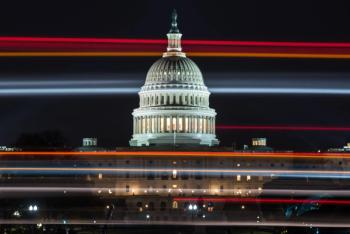
Future of Teledermatology After Pandemic Is Unclear
Use of teledermatology has greatly increased during the COVID-19 pandemic, but there are remaining concerns that may hinder its use after the public health emergency, according to a speaker at the annual meeting of the American Academy of Dermatology.
The COVID-19 pandemic caused the use of telemedicine in dermatology to grow exponentially, but there remain barriers and concerns about continued use of teledermatology after the pandemic, according to a speaker at the American Academy of Dermatology (AAD) Virtual Meeting Experience 2021.
During his session, Jules Lipoff, MD, FAAD, assistant professor, Department of Dermatology, University of Pennsylvania, and outgoing chair of the AAD Teledermatology Task Force, outlined initial use of teledermatology as the pandemic started, dermatologists’ experience using the technology over the last year, and future concerns regarding the use of teledermatology once the public health emergency is lifted.
As the COVID-19 pandemic took a hold of the United States and social distancing protocols took effect, policies created parity for video visits. These included a waiver for the Health Insurance Portability and Accountability Act that allowed any platform to be used and made state licensing reciprocal for many states, Lipoff explained. However, these changes are temporary as of now.
In 2020, the AAD Teledermatology Task Force surveyed AAD members to better understand their use of and experience with teledermatology. The survey went out to 5,000 participants, 591 of whom completed the surveys for a 13.5% response rate. The results were published March 31, 2021,
The responses highlighted the “ridiculously great increase” in teledermatology, Lipoff said. Prior to the pandemic, only 14% of dermatologists had used it, but 97% had used it since the start of the pandemic.
“There’s been a lot of resistance to using telemedicine in the past,” Lipoff said. “Now that everyone has basically had some experience, this will allow us to really parse out what works and what doesn’t from real experience, not just impressions of how it could be.”
Survey results found the biggest barriers to continued use of teledermatology were:
- Low reimbursement (69.8%), even with the government instituting parity for video visits
- Technology and connectivity issues (39.1%)
- Concerns about malpractice and liability (27.0%)
- Government regulations (23.2%), despite being relaxed during the pandemic
The dermatologists weighed in on the appropriateness of treating certain conditions via teledermatology, and nearly all said that a total body skin exam needs to be done in person. A high percentage also felt a bleeding mole needed to be seen in person, too. However, almost all felt like they didn’t need to see a patient in the office in order to manage acne.
While 70% of the respondents said they think teledermatology will continue after COVID-19, only 58% said they personally planned to continue using it. That disconnect is a result of the remaining concerns, accord to Lipoff.
“We interpret this as saying, ‘yes, we all know this is important, but there still are concerns,’” Lipoff explained. “Like is there enough reimbursement? What are the regulations going to be? Do we have sufficient innovation in technology?”
Furthermore, there are concerns that the telemedicine expansion could exacerbate disparities because these visits require great bandwidth, and patients who are poor or who live in minority communities might lack access. A
The authors, which include Lipoff, wrote that 26% of Americans have an annual income under $30,000 and they are dependent on their smartphone for internet access—meaning they do not have Wi-Fi or broadband. Dermatologists are already seeing this, he said, with these communities not having equal access to teledermatology.
“Some of the more wealthy and nonurgent patients who happen to have greater access are taking up more than their fair share of physicians’ limited time with this technology, perhaps pushing out, indirectly, people having more trouble,” Lipoff said.
Overall, it’s clear that teledermatology is here to stay in some way, although it has already fallen from the peak of the pandemic when up to 90% of visits were being managed by telemedicine, he said. However, policy changes that have helped during the public health emergency will need to be made permanent to keep the momentum.
“We have set new precedence, and we will never truly be back to normal practice again,” Lipoff said. “And hopefully that’s for the better.”
















































